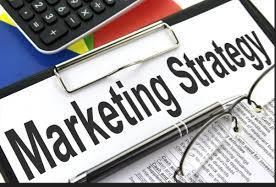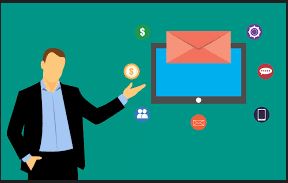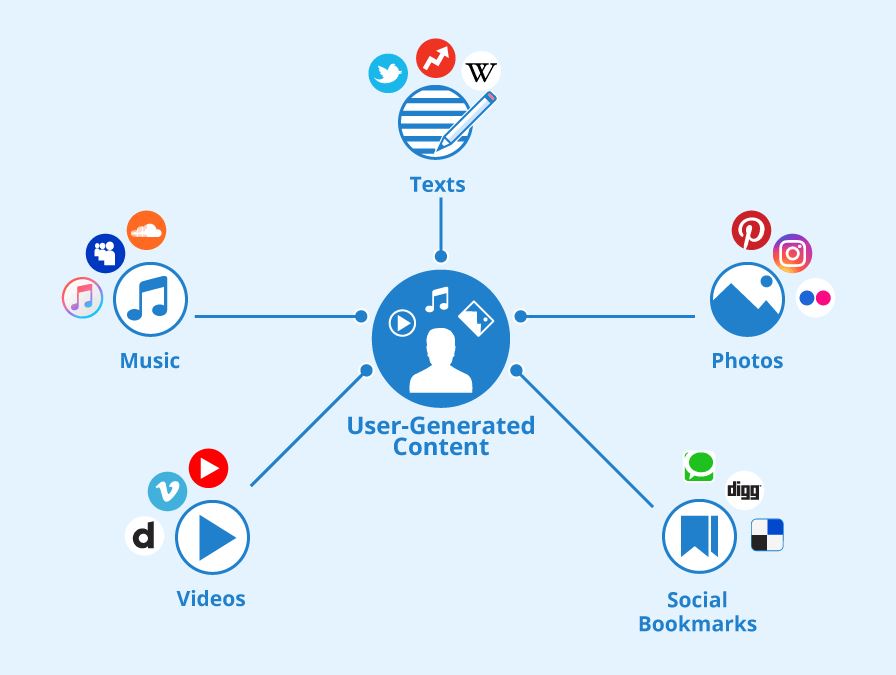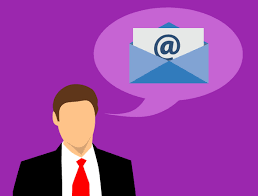Picture this: You have a magical tool that helps you tell your customers about all the amazing things your business offers. It’s like having a personal chat with each of them, but in a super-efficient way. That magical tool is called email marketing!
So, what exactly is it? Well, it’s like sending virtual letters to your customers’ inboxes. These letters can be about anything from cool new products, awesome discounts, or even just saying “Hi, we’re here for you!” It’s like keeping in touch with old friends, but with a business twist.
Now, let’s talk about why this is so amazing.
1. It’s Like a Friendly Reminder: Ever had a friend remind you about an awesome movie or a fantastic restaurant? That’s what email marketing does for your business! It gently nudges your customers and says, “Hey, don’t forget about us!”
2. Special Treats, Just for Them: Imagine getting exclusive offers or sneak peeks before anyone else. That’s the kind of VIP treatment your customers will love! Email marketing lets you share these special treats effortlessly.
3. Learn About Your Customers: It’s not just about talking; it’s about listening too! Through email, you can get to know your customers better. What they like, what they want, and how they feel about your brand. It’s like having a direct line to their thoughts!
Ready to Take Your Business to New Heights?
With email marketing your side, you’re not just selling products, you’re building relationships. You’re creating a community of loyal fans who can’t wait to see what’s next. the key is to keep it simple, relatable, and show the exciting possibilities that email marketing can bring to a business.
Unlocking the Power of Email Marketing
Email marketing, while one of the oldest forms of digital communication, remains a stalwart in the world of effective digital marketing strategies.In a landscape where newer communication methods like social media and live chat have emerged, email continues to reign supreme. With a staggering user base exceeding 4.5 billion people, it retains its throne as the king of marketing channels.

Every dollar invested, email marketing yields an impressive $36 return on investment (ROI). That’s not just a good return—it’s an outstanding one. It’s no wonder why it’s a must-have tool in every marketer’s arsenal.In a world of fleeting trends, email marketing stands as a timeless strategy that consistently delivers exceptional results.
Mastering Email Marketing: The Basics
Alright, let’s get down to the nitty-gritty of email marketing. Before we dive into the cool strategies, we’ve got to nail down the fundamentals. These golden rules will supercharge your email marketing game, trust us.
- Be Real, Be Human: Picture this: you’re chatting with a friend. That’s how your emails should feel. Address your users by their names. Let them see the friendly, human side of your brand.
- Catchy Titles, No Tricks: Yes, interesting subject lines are like the secret sauce for getting your emails opened. But, and this is important, keep it honest and on-topic. Nobody likes feeling tricked. It can make them hit that “unsubscribe” button faster than you can say “spam”.
- Short, Sweet, and Snappy: Think bite-sized. Most folks read their emails on their phones, so keep it short and to the point. If you’ve got a lot to say, link them to a blog post or landing page.
- Call Them to Action: You know those buttons that make you want to click? Those are called CTAs. Put ’em at the beginning and end of your email. Make it easy for your readers to know what to do next.
- Ask Nicely, Deliver Greatness: Buying email lists? Nope, not a good idea. It’s not just frowned upon, it’s often illegal. Plus, it doesn’t usually pay off. If you promise something awesome, deliver on it. High-quality content or offers, every time.
Golden Rule: You’re a Guest in Their Inbox
Picture this: you’re at a party, and everyone’s trying to get your attention. It’s like that for your readers’ inboxes. They’re bombarded with messages, offers, and ads.

Now, imagine your email is in that mix. To them, it’s like finding a needle in a haystack—not exactly a highlight of their day.
That’s why, my friend, good manners are your secret weapon.
Sending an email is like being invited to someone’s house for a meal. If they ask you to take off your shoes, you do it.
Treat their inbox with the same respect. You’re a guest in their life, and they hold the power to ask you to leave at any moment. So, always put your best foot forward and remember… you’re a guest in their inbox.
Now, let’s segue into something techy, shall we? Just like we value good manners, Google values emails that people actually want to read. When you follow these etiquettes, not only do your readers appreciate it
How Does Email Marketing Work?
Email marketing is a powerful tool that allows businesses to connect with their audience, promote products or services, and build lasting relationships. Here’s a comprehensive guide on how it all works:
1. Building Your Audience:
- Begin by collecting email addresses from interested individuals. This can be done through sign-up forms on your website, social media platforms, or at events. Remember, it’s crucial to obtain explicit consent to send marketing emails.
2. Segmentation:
- Divide your email list into smaller groups based on factors like demographics, behavior, location, or preferences. This helps in sending targeted and relevant content to different segments.
3. Creating Compelling Content:
- Craft engaging and valuable content for your emails. This could include newsletters, product updates, special offers, educational content, or event invitations.
4. Personalization:
- Address your recipients by their names and tailor content to their preferences. Personalized emails tend to have higher engagement rates.

5. Clear Call-to-Actions (CTAs):
- Include strong, clear CTAs that encourage recipients to take specific actions, such as making a purchase, signing up for an event, or downloading a resource.
6. Mobile Optimization:
- Ensure your emails are mobile-friendly, as a significant portion of email opens occur on mobile devices.
7. A/B Testing:
- Experiment with different elements of your emails (subject lines, content, CTAs, etc.) to see what resonates best with your audience.
8. Automations and Drip Campaigns:
- Set up automated email sequences triggered by user behavior or events. This can include welcome emails, abandoned cart reminders, and follow-up sequences.
9. Analytics and Tracking:
- Monitor key metrics like open rates, click-through rates, conversion rates, and unsubscribe rates. Use this data to refine your email marketing strategy.
10. Compliance and Permissions:
- Ensure you comply with relevant data protection laws (e.g., GDPR or CAN-SPAM). Always obtain proper consent before sending marketing emails.
11. Maintaining Sender Reputation:
- Avoid practices that might lead to being labeled as spam. Use a reputable email service provider and follow best practices for email marketing.
12. Testing and Optimization:
- Continuously test different elements of your emails to optimize performance. This could involve testing different subject lines, content formats, or sending times.
13. Feedback and Engagement Loops:
- Pay attention to recipient feedback. Use it to improve your content and offerings.
14. Conversion Tracking:
- Monitor how many recipients take the desired action after receiving an email (e.g., making a purchase or signing up for a webinar).
15. Integration with Other Marketing Channels:
- Align your email marketing efforts with your overall marketing strategy. This could include coordinating with social media, content marketing, and advertising.
16. Maintain a Consistent Schedule:
- Regular, predictable emails help keep your brand in the forefront of your subscribers’ minds.
17. Adapt and Evolve:
- Keep up with industry trends and adapt your strategies as needed. Stay responsive to your audience’s changing preferences.
18. Provide Value First:
- Always aim to provide value to your subscribers. This could be in the form of informative content, exclusive offers, or helpful resources.
19. Monitor and Analyze Results:
- Regularly review your email marketing metrics. Identify what’s working and what needs adjustment.
20. Maintain Trust and Transparency:
- Build trust with your audience by being transparent about how their data is used and by delivering on promises made in your emails.
How to Automate Your Email Marketing
Automating your email marketing can save you time and ensure that your messages reach the right people at the right time. Here’s a step-by-step guide on how to set up email marketing automation:
1. Choose an Email Marketing Platform:
- Select a reputable email marketing platform like Mailchimp, Constant Contact, or HubSpot. These platforms offer a range of automation features.
2. Define Your Goals:
- Determine what you want to achieve with email automation. This could include nurturing leads, onboarding new customers, re-engaging inactive subscribers, or promoting specific products/services.
3. Segment Your Email List:
- Divide your email list into smaller groups based on factors like demographics, behavior, or preferences. This allows for more targeted and personalized automation.
4. Set up Triggers:
- Triggers are events that initiate an automated email. Common triggers include:
- Welcome Series: Send a series of emails to new subscribers.
- Abandoned Cart: Send a reminder to customers who added items to their cart but didn’t complete the purchase.
- Birthday or Anniversary Emails: Send personalized greetings and offers.
- Activity-Based Triggers: Send emails based on user interactions like clicks, page visits, or downloads.
5. Create Compelling Content:
- Craft engaging content for your automated emails. This includes subject lines, body copy, images, and calls-to-action (CTAs).
6. Design Email Templates:
- Create visually appealing templates that align with your brand. Most email marketing platforms offer customizable templates.
7. Test Your Emails:
- Before launching, perform A/B tests on different elements (subject lines, content, CTAs) to optimize performance.
8. Set up Drip Campaigns:
- Drip campaigns are a series of emails sent over a period of time. These can be used for lead nurturing, onboarding, or product education.
9. Implement Personalization:
- Use dynamic tags to include recipient names or other personalized information. Personalized emails tend to have higher engagement rates.
10. Time Your Emails Strategically:
- Consider the best times and days to send your automated emails. This can vary depending on your target audience and industry.

11. Monitor and Analyze Performance:
- Track key metrics like open rates, click-through rates, conversion rates, and ROI. Use this data to refine your automation strategy.
12. Adjust and Optimize:
- Based on performance data, make adjustments to your automation sequences. This could involve tweaking content, changing triggers, or adjusting timing.
13. Ensure Compliance:
- Ensure that your automated emails comply with relevant data protection laws, like GDPR or CAN-SPAM.
14. Maintain Flexibility:
- Regularly review and update your automated campaigns to adapt to changing trends and audience preferences.
15. Integrate with Other Tools:
- Integrate your email marketing platform with other marketing tools (e.g., CRM, analytics) for a seamless workflow.
Email Marketing Tools: Your Path to Success
To execute a triumphant email campaign, you’re going to need some serious firepower. Here are the seven heavy-hitting email tools you absolutely must have in your arsenal:
1. Email Service Providers (ESPs)
These are the backbone of your email marketing strategy. Choose wisely:
- Constant Contact: Ideal for e-commerce, it boasts features like automated product recommendations and shoppable emails. Plans start at $36 per month.
- Sendinblue: A gem for small businesses running straightforward email campaigns. It offers a robust feature set with CRM, live chat, and SMS capabilities. Paid plans start at $25 per month, and there’s even a free version.
- Pardot (Salesforce): Tailored for B2B campaigns, Pardot is designed to align with the B2B buyer journey. For high-impact campaigns, be prepared to invest at least $1,250 per month for up to 10,000 contacts.
2. Email Deliverability Tools
Ensuring your emails land where they should is crucial. These tools are your deliverability secret weapons:
- MailGenius: It scrutinizes your emails for potential spam triggers, ensuring your messages reach the right inboxes. And it’s free!
- GlockApps: Provides real-time delivery results, revealing whether your email made it to the Inbox, Spam folder, Gmail’s Promotional or Social tabs, or if it wasn’t delivered at all. Personal accounts are free, with pricing options available.
3. Email Testing and Tracking Tools
Fine-tuning your campaigns for optimal performance is a game-changer. Here’s what you need:
- Litmus: This powerhouse lets you test and track emails across traditional web clients and popular mobile devices.
- Your ESP: Many ESPs also offer robust testing and tracking features. Be sure to explore what’s available in your chosen platform.
4. Email Personalization Tools
Elevate your personalization game beyond just using first names. Here’s a game-changer:
- Hyperise: The unrivaled champion of email personalization. It allows you to add dynamic, personalized images to every email, including profile pictures from social media platforms.
- ESP or Customer Engagement Platform: Some ESPs and customer engagement platforms also offer personalization features. Make sure to explore what’s available within your chosen toolset.
5. Email Automation Platforms
Streamline your campaigns and reach your audience at precisely the right moments:
- HubSpot: A comprehensive marketing automation suite that includes robust email marketing capabilities. It’s a powerhouse for lead nurturing, CRM integration, A/B testing, and detailed analytics.
- ConvertKit: Designed with bloggers, creators, and online businesses in mind. It offers automation based on user behavior, visual automation funnels, and subscriber management.
6. Email List Management Tools
Keep your email lists clean, organized, and engaged:
- OptinMonster: A powerful lead generation and email marketing tool that helps you grow your email list and boost conversions.
- Hunter: Enables you to find and verify email addresses, ensuring you’re sending to valid and active recipients.
7. Email Content Creation Tools
Elevate your email content with eye-catching visuals and compelling copy:
- Canva: A versatile design tool that makes it easy to create stunning visuals for your emails.
- Grammarly: Ensures your email copy is polished and error-free, enhancing your professionalism and credibility.
Email Marketing Simplified: A Comprehensive Guide
Unlocking the Power of Email Marketing
Email marketing has stood the test of time, consistently proving itself as one of the most effective digital marketing strategies. In this guide, we’ll delve into the fundamentals and advanced strategies that can help you harness the full potential of email marketing.
Step 1: Build Your List
Before you can start sending emails, you need an audience to send them to. Here’s how to get started:
- Add a Subscription Form: Begin by adding a banner or form to your website asking visitors to subscribe.
- Offer an Incentive: Treat email addresses like currency. Offer something valuable in exchange for their contact information, such as downloadable assets, coupons, or informative newsletters.
- Follow Email Marketing Laws: Ensure compliance with laws like CAN-SPAM and GDPR. Never buy email lists, and make unsubscribing easy for recipients.
Example: Morning Brew Newsletter
Morning Brew offers engaging daily updates as an incentive for subscribing. Their clear value proposition sets the stage for effective email marketing.
Example: Neil Patel’s Call to Action
Neil Patel’s website employs a specific call to action, clearly explaining the benefit of providing an email address. This targeted approach increases subscriber engagement.
Step 2: Provide Great Content
Setting expectations is key in email marketing. Delivering on what you promise is crucial for a successful campaign.
- Send an Introduction Email: Immediately after a subscriber signs up, send an introductory email explaining what they can expect.
- Don’t Pitch Right Away: Build a rapport with your subscribers before introducing sales pitches. Pitching too early can lead to disengagement.
- Write a Great Email Newsletter: Blend updates with personal messages or friendly memos. Use your newsletter to nurture relationships rather than simply pushing products.
Example: Airbnb’s Welcome Email
Airbnb’s welcome email provides a step-by-step guide for new customers, ensuring a smooth onboarding process. It sets clear expectations and establishes a positive user experience.
Example: Spotify’s Confirmation Email
Spotify’s confirmation email reassures the subscriber, confirming their subscription and outlining what they can anticipate. This builds trust and establishes a solid foundation for future engagement.
Step 3: Analytics and Segmentation
Refining your email campaigns for better results involves understanding analytics and implementing segmentation.
- Understand Email Analytics: Pay attention to open rates, click-through rates, and unsubscribes. They offer valuable insights into subscriber engagement and content effectiveness.
- Segment Your Email List: Divide your list into targeted groups based on factors like customer status, interests, demographics, and more. This allows for more personalized and effective communication.
Example: Segmentation Based on Interests
For instance, a clothing retailer might segment their list based on customer interests. This allows them to send tailored emails about specific clothing lines or styles, maximizing engagement and conversions.
Example: Email Analytics in Action
Analyzing metrics like open rates and click-through rates helps you gauge the effectiveness of your campaigns. Use this data to refine your content and targeting strategies for improved results.
Step 4: Email Automation
Automating your emails streamlines your communication process and ensures consistency in your campaigns.
- Use Email Automation: Set up automated sequences triggered by user behavior or specific events. This includes welcome emails, abandoned cart reminders, and follow-up sequences.
- Keep it Human: Despite automation, maintain a personal touch in your emails. Tailor content to individual preferences and behaviors.
Example: Welcome Email Automation
Creating a welcome series with automated emails helps in introducing your brand and setting clear expectations for new subscribers.

Example: Personalized Recommendations
Sending personalized product recommendations based on a user’s browsing history or previous purchases adds a human touch to automated emails.
By following these steps and embracing email marketing best practices, you can build a robust email marketing strategy that engages your audience, nurtures relationships, and drives results for your business. Remember, consistency, relevance, and value are the keys to success in the world of email marketing.
